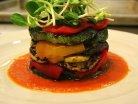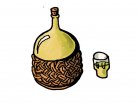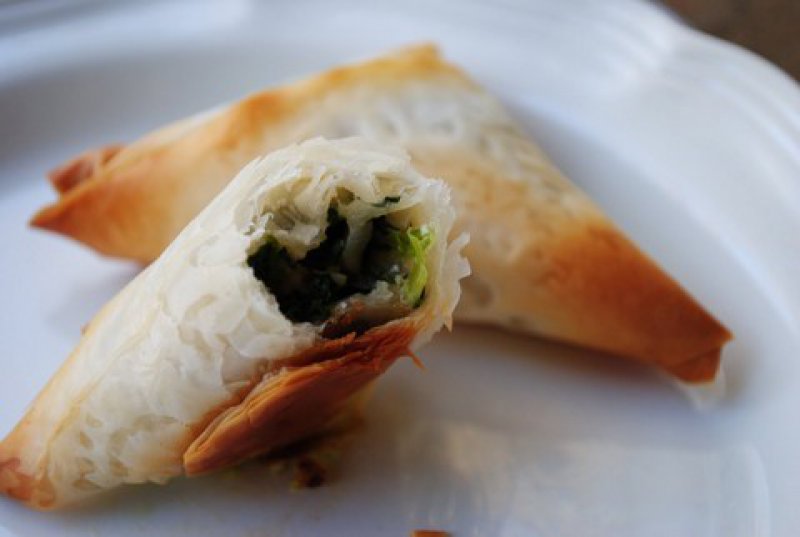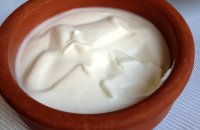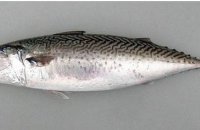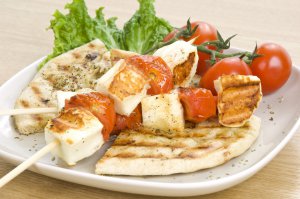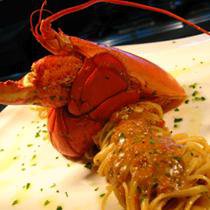The Continuous Rise and Fall of the Fry
Thanks to concerns about practicality and cost, the Greek fried potato, a national gastronomic treasure, is all but an extinct dish. Yet inklings of its survival and resuscitation are starting to surface. For one, I found it defined on a website called the "Official French Fries Pages."
In a listing of fried potato recipes from all over the globe, the Greek version was described as usually cut round, always fried in an olive-oiled skillet, and served with salt and oregano. Throughout the country, people are starting to lament its loss. There is even official consideration at the Greek National Tourist Organization for reviving it and making it a de rigueur menu item at any restaurant that claims to serve traditional Greek cuisine.
But, the reality of the situation is that our national treasure has been reduced to a horror in almost every public eating place: a furry-textured substance with the taste of plastic wood. These industrial French fries first started to appear in the early 1980s, at large souvlaki places. Their use spread like wildfire because they expedited the needs of mass production. Now, they have conquered the market. Often, they're not even carved out of Greek potatoes, but from varieties imported from Holland and Germany, much cheaper than our own. These low-quality potatoes are precut and prefried in Greek factories before being packed into 20-kilo bags for delivery to tavernas all over the country. I empathize with the restaurateur who justifies himself by explaining that it is impossible to prepare 100 or 120 kilos of fresh potatoes every day unless one hires three people to do just that. On the other hand, I, for one, have decided to become a conscientious objector. I simply stopped eating the stuff because it tastes so bad.
As for the fries in fast-food restaurants, we won't delve deep into the issue. But the next time you order fries at a fast food joint, just remember that many establishments use a kind of heavy-duty cooking fat (often a combination of beef suet and vegetable shortening) that can last for 4-7 days at a constant temperature of 168 degrees Celsius before going rancid and requiring change. Potatoes cooked on the car engine would be healthier.
At this point in time, the only hope for the Greek fried potato rests on home front. Even there, though, the dish faces serious threats. First, because the territory is murky. Every connoisseur (and there are many) has his or her own philosophy when it comes to making the perfect fries. Ali-bab, a 19th century Polish count and famed gourmet, wrote in his treatise "Gastronomie Practique" that "making French fries is the beginning of culinary art."
Yet no dish inspires as much difference of opinion. Making the perfect fry depends on several factors: variety of potato, fat used, temperature, cooking vessel, and technique.
The Varieties Quagmire
In Greece, the issue of variety is the most confusing of all. In almost every other part of the Western world (everywhere from Australia to America to France and Belgium, where the dish was actually born), cooks distinguish the potato varieties best suited for the fryer. In Greece, though, potatoes are distinguished by the place they are cultivated, by the time of year they are harvested, and by whether they are washed or not. The harvest cycle goes something like this: spring potatoes (usually a 90-day growing cycle) are cultivated in Kalamata, Pyrgo, Achaia, Larissa and Crete; summer potatoes come from Corinth, Evia, Larissa, Serres, Drama and Oresteiada; Thebes gives us the fall potato, but so do Patra and Pyrgo.
No one, however, seems to know very much about varieties and their particular attributes (firm, starchy, watery, etc). According to the Ministry of Agriculture in Athens, Greece cultivates three main varieties for food: Sputna, Lizeta, and Nikola. According to the Center for Potato Seedlings in Naxos, which is part of the Ministry of Agriculture, the main varieties are Spunta and Marfola. (The former is oblong; the latter round.) There are others, such as Yerla and Entzina, but they are cultivated on a small scale. Naxos enjoys some fame as a potato-lover's haven, perhaps because it is the seed center of Greece, or perhaps because its soil helps produce some of the country's best spuds. According to Giannis Marakis, an agronomist at the seed center, the Naxos potato can be any one of the above varieties. Apparently, whatever is not sold as seed is left to grow and sold as a regular, edible potato. He was also the only expert I spoke with who had any thoughts on the best potato for frying. Apparently it is the oblong Spuntna. The round Marfola is too firm and fries made with them tend to be tough. There is also a yellow-fleshed potato grown in Macedonia, which sounds a lot like the Binjte, the European variety most popular for fries. But from what I could garner, it is not available in Athenian markets.
The Fat, the Pan, the Method
According to the Official French Fry Pages website, the optimum cooking fat is either pure vegetable oil or shortening because these have no flavours which would interfere with the delicacy of the potato. Corn oil seems to be the prevailing favourite worldwide.
In Greece, opinions vary. Our own resident philosopher of taste, Christos Zouraris, author of The Deipnosophist, states categorically "Olive oil, without question." Spiros Kotsis, owner of Abrevoir, one of the few restaurants in the whole Attica basin that still makes its own fries -the French alumettes- agrees, although in the interest of economy he uses refined, not extra-virgin, olive oil. At least one well-known gourmand, though, Ilias Mamalakis, begs to be different. Although he waxes nostalgic for the fries of his youth from his village in Crete -big fries cut like quince and fried in olive oil over a wood fire- he claims that olive oil now has one big disadvantage. It is too expensive. Pirinelaio is the best Greek oil for frying potatoes, he adds. Palm oil is good, too, says Mamalakis, because it solidifies at 22-24 degrees Celsius. "French fries turn out dry and crisp that way," he explains. As for myself, I only fry in olive oil, weathering the expense, in the interest of both health and taste.
Just how to cook our beloved Greek fries, whether the real thing in olive oil or the ersatz, modern compromise of the dish, is an issue seemingly as contentious as Imia.
In Western Europe, specifically in Belgium, Holland and France, where fried potatoes are the bread of the masses, common practice dictates that the potatoes be fried twice, first at a lower temperature, around 163° C, then at a higher one, around 188° C. There is scientific evidence supporting this odd-sounding technique. In frying foods we aim to cook them through and to brown the surface sufficiently to produce the characteristic fried flavour and texture. Too high a temperature will brown the surface before the interior is cooked, while too low will take too long. The food at hand will absorb too much oil and become overcooked. In the two-stage method, the first serves to cook the potato through without browning the surface. The potatoes are cooked until limp, that is until the starch granules have gelatinized. Then we let them cool to room temperature. By the second frying, the potatoes are covered with a film of gelatinized starch, which slows any further oil absorption. The second frying can then be done at high temperature and stopped as soon as the outside is browned.
This is not the prevailing opinion in Greece. "That is only a method for mass frying," says Lefteris Lazarou, kitchenmeister at Varoulko. "At home the chef opts for a small pot, something that can imitate the deep fryer, never a skillet. The potatoes must swim in the oil." He recommends filling the pot three-quarters of the way up with oil, heating it, adding the potatoes and leaving them for a few minutes before you start to turn them. "They have to cook on the bottom first," he explains.
Zouraris, on the other hand, is adamant about the skillet. "Only in a skillet, with a little olive oil heated until very hot. The best way is to turn them one by one," he adds. His own penchant is for potatoes fried in the Cretan manner, that is soft and not fried dry or golden. He recommends a wood fire for the smoky taste, or at the least, a gas fire, so that you can control the heat better. Mamalakis has his own school of thought, "first start with low heat so that the potatoes cook for 2-3 minutes, then raise the heat," he says. "That ensures a crust."
General Rules
As for my own experience, I can only add a few pearls of wisdom. Never refrigerate potatoes meant to be fried or cooked otherwise because the starch in them converts to sugar and burns. Wash the potatoes and dry them very well before adding them to the skillet. Make sure they are all cut about the same size so that they cook evenly.





































